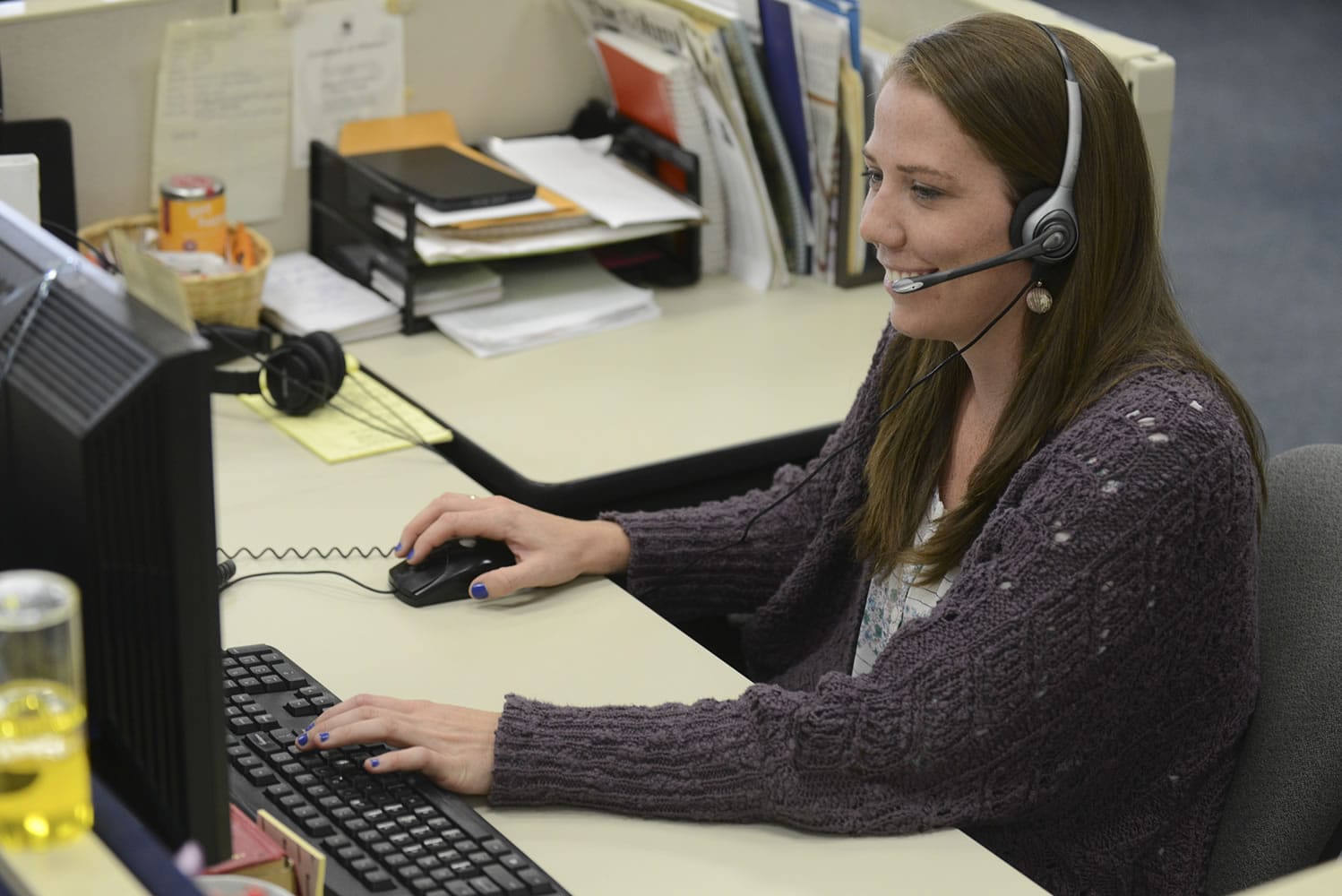By 9 a.m., when a receptionist unlocks The Columbian’s front door — and some smiles — for the day, breaking news reporter Emily Gillespie has been on the job for hours.
Gillespie slips through a side newsroom door at 6 a.m. in time to begin the shift that’s nicknamed “morning cops.” She starts by checking news sources: electronic mailboxes, sister publications, the Clark Regional Emergency Services Agency’s continuously updated log of 911 calls, the newsroom’s multiple TV screens. She gets Associated Press alerts through a smartphone app.
Our evening press deadline is the last thing on Gillespie’s mind; it’s her job to get overnight news in front of Columbian online readers immediately. Whether it’s a car crash on Interstate 5 during the morning commute, a wildfire update from across the state or a breaking Supreme Court decision in Washington D.C., Gillespsie will tweet it out and post it on our website.
“Print is not the point anymore,” she said. “The Internet is the point.” The news cycle has expanded from daily to continuous, and readers who live online want frequent fresh content. Even as the daily paper remains our foundation, we are running to keep pace with an electronic world that never blinks.
The rest of the news staff starts trickling in and reaching out. Copy editor Amy Libby and Metro Editor Craig Brown review the latest local, regional and national happenings, and Libby starts combing news sources for outside stories to post on the Web and on Columbian social media accounts such as Facebook.
“I focus on regional news, things coming out of Olympia and Portland,” Libby said. “That includes business stories. A lot of our readers commute to businesses in Portland.” She faces three daily deadlines to post material on the Internet: 8 a.m., noon and 6 p.m. — aimed at capturing eyeballs over breakfast, in the sandwich line at Subway and then after work.
Libby also is The Columbian’s social media moderator, which means it’s her unenviable job to delete comments from our always-vehement discussion boards when the vehemence turns personally vicious or otherwise inappropriate. Anonymous attacks are why we limit comments to people with Facebook accounts, but being identifiable hasn’t shamed away all the ugliness.
“The Internet is still the Wild West,” Libby said.
Reporters are busy on the phone or out in the field. News photographers are running back and forth between assignments and our photo lab. Everyone has appointments and meetings, plans and schedules, outside and inside the building. There’s an 11 a.m. new meeting in Editor Lou Brancaccio’s office where department heads firm up the day’s plans. There’s a larger 3:30 p.m. meeting in the main conference room where a dozen or more editors review what’s ready to go, what will be ready soon and how it will all look on the page. Photos are projected on a video screen; strong images have a lot to do with the paper’s ultimate design.
By early evening, reporters are wrapping up most stories. If somebody is covering a night meeting or event, space is held open. Our team of editors read everything, ask questions and work on the copy; after that, copy editors and page designers give it all another careful look — and often come up with more questions. Reporters know that a standard feature of the job is the three-minute interruption of home life for a telephone explanation of some garbled wording or oddball statistic.
Finished stories are sent to the Web throughout the day and, finally, to print. The pages are made into plates — four plates for each color page, one for each black-and-white page — that are fastened onto the press for reproduction. Press Room Manager Rick Pettit, who’s been at The Columbian since 1984, said our Goss offset press typically cranks out 48,000 newspapers per hour. Different sections and special jobs run through the machinery all day long, he said, with the newsiest pages coming last — starting to print at 11:30 p.m. most nights.
By the time our delivery drivers have collected their bundles, hit their routes and pitched their papers into earliest twilight, morning cops reporter Emily Gillespie is getting ready for another day.




